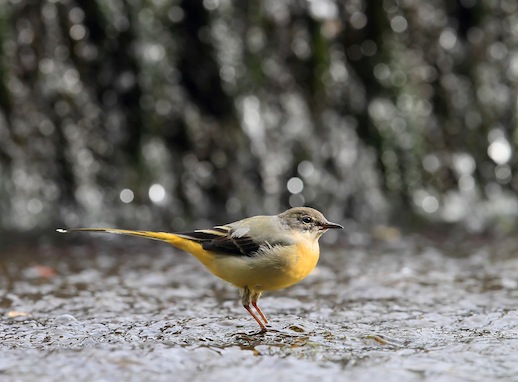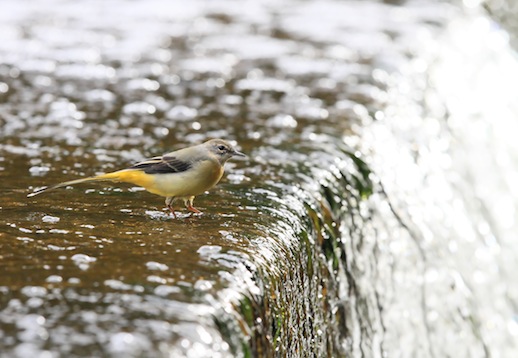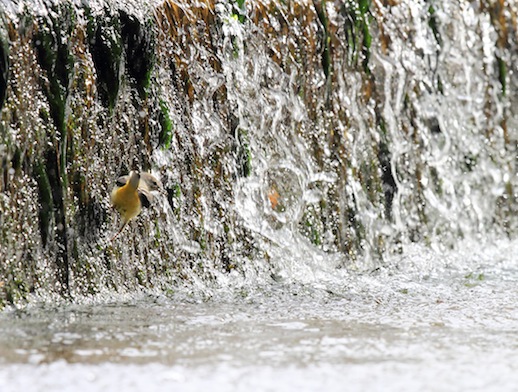Words & pictures by Mat Bingham.
I spent most of the summer and early autumn this year focused on a project to photograph damselflies, specifically Banded Demoiselle’s on the River Soar as this season there were lots of them. A particularly good spot for them was the small weir in our village, the late afternoon and evening sun provided fantastic lighting and the water lilies, attractive perches.
I wasn’t the only one to notice the large numbers of brightly coloured insect jewels distracted by mating, eating and fighting, a pair of Gray Wagtails had taken up residence at the weir and were feeding their young on any demoiselles not quick enough to take flight and evade them.
This gave me a dilemma, whether to carry on with the demoiselle project or try to take some photos of the Grey Wagtails. I decided to complete the demoiselle project first and see what shots I could take of the Grey Wagtails later in the year.
I focused on the wagtails once the demoiselles had started to die off and I had taken most of the pictures I needed for the project. I spent a great deal of time watching the wagtails behavior and planning my shots before attempting any photographs. They appeared to change tactics once the demoiselle food source had dried up. They were now feeding largely on crustaceans and larvae on the weir itself.
The small weir is an overflow, which spills water from the canalised section of the river immediately upstream of the lock into the main river. The river is quite flashy but the weir normally passes a reasonable volume of water even when there hasn’t been much rain.
What I noticed was that when a canal boat entered the lock and the lock started to fill with water the weir would be robbed of water on occasions to the point where no flow at all passed over it. The wagtails had realized this and would seize the opportunity to run out along the weir looking for tasty morsels to pluck from the concrete weir steps. This feeding frenzy would last for about five to ten minutes before the flow would start to increase over the weir to the point that it was flowing too fast for them to feed. They would then fly off and wait for the next canal boat.
This presented a unique opportunity for me to photograph the wagtails feeding. The problem was how to take pictures from a very slippery weir and avoid falling into the main river complete with my camera equipment.
The solution I adopted was to set up a series of ropes from the top of the weir, which I could use to support me whilst I focused more on the photography rather than keeping my footing.
A fortunate coincidence was that the majority of the boating traffic on the river and therefore the greatest number of photographic opportunities occurred at weekends. This allowed me to work on this as a weekend project!
Through trial and error I found it best to wait at the bottom of the weir for the flow to subside and then slowly work my way up the weir steps with the birds as they were feeding without disturbing them. This gave me the ideal low shooting angle I wanted.
Normally by the end of the day I found I was absolutely wet through as a climbing harness is difficult to wear over chest waders. Instead I would wear conventional waders, which could be worn with a climbing harness however it was inevitable that the waders would eventually fill with water. On a typical day I would stay at the weir with the wagtails until I couldn’t tolerate the cold and wet any longer or until the boating traffic dried up.
For now I have stopped the project as the wagtails have migrated, probably because there is not enough traffic on the river to provide frequent enough feeding opportunities but I hope they will be back next spring.


